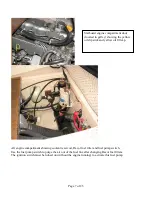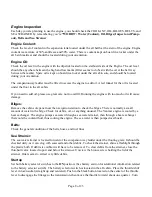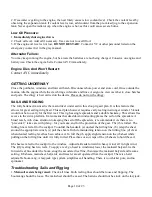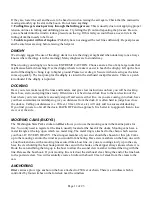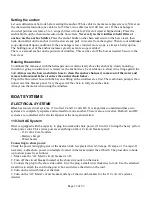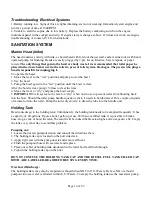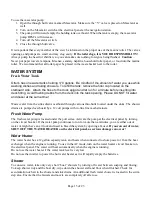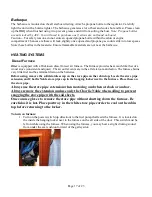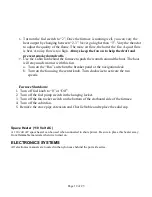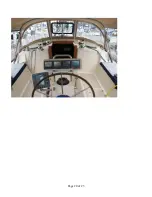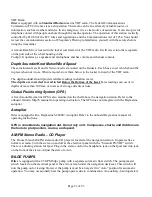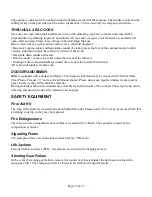
Page 11 of 23
If they are, lower the sail and be sure to be head to wind on raising the sail again. Check that the mainsail is
moving smoothly up the slot in the boom. Do not force anything.
2.
Furling line gets stuck partway through the furling process:
This is usually due to not applying proper
tension on lines in furling and unfurling process. Try letting the jib out and repeating the process. Be sure
you are headed into the wind to reduce pressure on the rig. If this fails you could have an over-ride in the
furling drum that needs to be fixed.
3.
Unable to point with reef in place:
Probably have not snugged the reef line sufficiently. Repeat process
and be sure lines are snug before raising the halyard.
DINGHY
We strongly suggest the use of the dingy davits to store the dingy at night and when underway (one always
knows where the dingy is in the morning). Many dinghies are lost underway.
When rowing your dinghy to shore, use EXTREME CAUTION. Choose an area free of any large rocks that
might cause harm in beaching. Use the dinghy wheels to make it easier to beach the dinghy. Lift up the bow
and roll the dinghy to bring it up to higher ground. Please never drag it. Secure it when leaving as the tides
come up quickly. The foot pump for the dinghy is stored in the starboard cockpit lazarette. There is a patch
kit onboard if the dinghy is ruptured.
DOCKING
Have your crew make ready the lines and fenders, and give clear instructions on how you will be docking.
Have bow, stern, and spring lines ready. Often times it is best to lead dock lines to the mid section of the
boat where your crew member can easily step off and secure either line. As you are coming in to dock, have
your best communicator midships to give you distances from the dock. It is often hard to judge how close
the dock is. Calling out distances (i.e. 20 feet, 10 feet, 4 feet, etc.) will only add to a successful docking.
If you find you are too far off the dock, BACK OFF and re-approach. It is better to re-approach than to lose
crew over the side…
MOORING CANS (BUOYS)
The Washington State Parks sticker on
Otter
allows you to use the mooring cans in the marine parks for
free. You only need to register at the kiosk, usually located at the head of the docks. Mooring cans have a
metal triangle at the top, upon which is a metal ring. The metal ring is attached to the chain which secures
your boat. IT IS VERY HEAVY. The strongest member of your crew should be chosen for this job. Come
up to the mooring can into the wind as you would for anchoring. Have crew members on the bow, one with
a boat hook and one with a mooring line secured like a bow line. As you are coming slowly up to the can,
have the crew holding the boat hook point at the can with the hook so the skipper always knows where it is.
Hook the can and bring the ring up to the boat to allow the second crew member to thread the ring with the
line. Release the boat hook. If your mooring line is led out the starboard cleat, bring the end of the line back
to the port side cleat. You will essentially create a bridle with about 10 feet of slack from the cleats to the
can.
ANCHORING
Otter
carries a plow type anchor on the bow attached to 250 feet of chain. There is a windlass which is
controlled by foot switches on the foredeck near the windless.
Содержание 2000 Island Packet 380
Страница 1: ...Page 1 of 23 OPERATION MANUAL Otter 2000 Island Packet 380...
Страница 20: ...Page 20 of 23...







